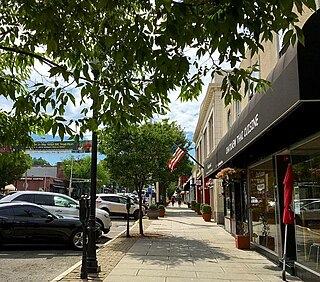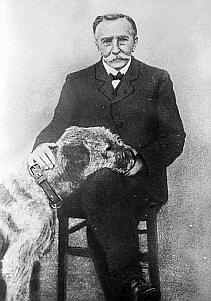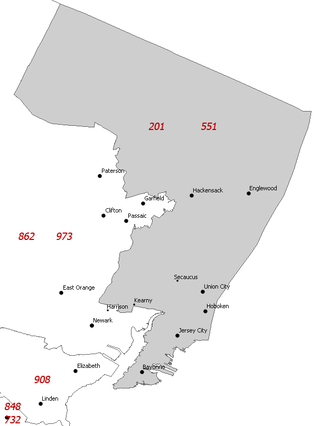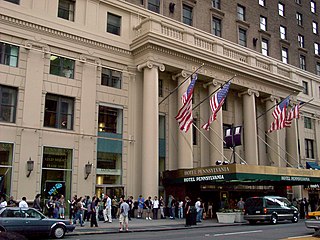Related Research Articles

A telephone switchboard was a device used to connect circuits of telephones to establish telephone calls between users or other switchboards, throughout the 20th century. The switchboard was an essential component of a manual telephone exchange, and was operated by switchboard operators who used electrical cords or switches to establish the connections.
Direct distance dialing (DDD) is a telecommunication service feature in North America by which a caller may, without operator assistance, call any other user outside the local calling area. Direct dialing by subscribers typically requires extra digits to be dialed as prefixes to the directory telephone number of the destination. International Direct Distance Dialing (IDDD) extends the system beyond the geographic boundaries of the North American Numbering Plan (NANP).
Phreaking is a slang term coined to describe the activity of a culture of people who study, experiment with, or explore telecommunication systems, such as equipment and systems connected to public telephone networks. The term phreak is a sensational spelling of the word freak with the ph- from phone, and may also refer to the use of various audio frequencies to manipulate a phone system. Phreak, phreaker, or phone phreak are names used for and by individuals who participate in phreaking.

Englewood is a city in Bergen County, in the U.S. state of New Jersey. Englewood was incorporated as a city by an act of the New Jersey Legislature on March 17, 1899, from portions of Ridgefield Township and the remaining portions of Englewood Township. As of the 2020 United States census, the city's population was 29,308, its highest decennial count ever and an increase of 2,161 (+8.0%) from the 2010 census count of 27,147, which in turn reflected an increase of 944 (+3.6%) from the 26,203 counted in the 2000 census.

The North American Numbering Plan (NANP) is a telephone numbering plan for twenty-five regions in twenty countries, primarily in North America and the Caribbean. This group is historically known as World Zone 1 and has the telephone country code 1. Some North American countries, most notably Mexico, do not participate in the NANP.
Subscriber trunk dialling (STD), also known as subscriber toll dialing, is a telephone numbering plan feature and telecommunications technology in the United Kingdom and various Commonwealth countries for the dialling of trunk calls by telephone subscribers without the assistance of switchboard operators.

This timeline of the telephone covers landline, radio, and cellular telephony technologies and provides many important dates in the history of the telephone.
The Pacific Bell Telephone Company is a telephone company that provides telephone service in California. The company is owned by AT&T through AT&T Teleholdings, and, though separate, is now marketed as “AT&T”. The company has been known by a number of names during which its service area has changed. The formal name of the company from the 1910s through the 1984 Bell System divestiture was The Pacific Telephone and Telegraph Company. As of 2002, the name “Pacific Bell” is no longer used in marketing, Pacific Bell is still the holder of record for the infrastructure of cables and fiber through much of California.

Area codes 201 and 551 are telephone area codes in the North American Numbering Plan (NANP) in the U.S. State of New Jersey. Area code 201 was the area code assigned to the entire state of New Jersey in 1947, when the North American area code system was formed. After splits in 1956, 1991, and 1997, it is assigned to the northeastern portion of the state, including most of Hudson and Bergen counties, bordering New York City. Major cities in the numbering plan area include Bayonne, Jersey City, Hoboken, Hackensack, Secaucus and Englewood. Area code 551 was added to this numbering plan area in 2001 in formation of an overlay. Area code 201 is also assigned for wireless services in some rate centers in the 973 and 908 numbering plan areas, such as Newark, Morristown, and New Brunswick.
Seven-digit dialing is a telephone dialing procedure customary in some territories of the North American Numbering Plan (NANP) for dialing telephone numbers in the same numbering plan area (NPA). NANP telephone numbers consist of ten digits, of which the leading three are the area code. In seven-digit dialing it is not necessary to dial the area code. The procedure is also sometimes known as local format or network format.
In telecommunications, a long-distance call (U.S.) or trunk call is a telephone call made to a location outside a defined local calling area. Long-distance calls are typically charged a higher billing rate than local calls. The term is not necessarily synonymous with placing calls to another telephone area code.

Verizon New Jersey, Inc., formerly New Jersey Bell Telephone Company, is the Bell Operating Company serving the U.S. state of New Jersey. In 1984, the Bell System Divestiture split New Jersey Bell off into a Regional Bell Operating Company, along with the 21 other BOCs AT&T had a majority stake in. On January 1, 1984, New Jersey Bell became part of Bell Atlantic.

PEnnsylvania 6-5000 is a telephone number in New York City, written in the 2L+5N format that was common from about 1930 into the 1960s. The number is best known from the 1940 hit song "Pennsylvania 6-5000", a swing jazz and pop standard recorded by the Glenn Miller Orchestra. Its owner, the Hotel Pennsylvania, claims it to be the oldest continuously used telephone number in New York City. The hotel opened on January 25, 1919, but the exact age of the telephone number and the veracity of the hotel's claim are unknown. For many years, callers to (212) 736-5000 were greeted with the hotel's phone system recorded greeting that includes a portion of the song.

A telephone number is a sequence of digits assigned to a landline telephone subscriber station connected to a telephone line or to a wireless electronic telephony device, such as a radio telephone or a mobile telephone, or to other devices for data transmission via the public switched telephone network (PSTN) or other public and private networks.
The original North American area codes were established by the American Telephone and Telegraph Company (AT&T) in 1947, following the demonstration of regional Operator Toll Dialing during the World War II period. The program had the goal of speeding the connecting times for long-distance calling by eliminating intermediary telephone operators. Expanding this technology for national use required a comprehensive and universal, continent-wide telephone numbering plan.

A telephone exchange, telephone switch, or central office is a telecommunications system used in the public switched telephone network (PSTN) or in large enterprises. It interconnects telephone subscriber lines or virtual circuits of digital systems to establish telephone calls between subscribers.

Englewood, New Jersey was incorporated on March 17, 1899. Beginning in 1980, Englewood switched from a Mayor-Council form of government to a modified Council-Manager plan of government in accordance with a Special Charter granted by the New Jersey Legislature. Under this charter, the mayor retains appointive and veto powers, while the council acts as a legislative and policy making body, with some power to appoint and confirm appointments. The City Council consists of five members, each elected for a three-year term. Four are elected from the individual wards in which they live and the other is elected by a citywide vote as an at-large member. The city is divided into four wards which are approximately equal in population. Administrative functions are responsibilities of the City Manager. The six seats in the governing body are elected in a three-year cycle as part of the November general election, with wards two and four both up together, followed a year later by wards one and three, and then the at-large council and mayoral seats. Each ward votes in two of the three years in the cycle, once for its ward seat, in the other year for the two positions voted at-large and one year with no election. The terms begin on January 1 of year after the November election.
In the North American Numbering Plan (NANP), interchangeable NPA and central office codes constituted a change in numbering plan design and policy, to mitigate exhaustion of the numbering resources of the ten-digit telephone numbers used in the closed numbering plan of the NANP.
Operator Toll Dialing was a telephone call routing and toll-switching system for the Bell System and the independent telephone companies in the United States and Canada that was developed in the 1940s. It automated the switching and billing of long-distance calls. The concept and technology evolved from the General Toll Switching Plan of 1929, and gained technical merits by the cutover of a new type of crossbar switching system in Philadelphia to commercial service in August 1943. This was the first system of its kind for automated forwarding of calls between toll switching centers, but it served customers only for regional toll traffic. It established initial experience with automatic toll switching for the design of a nationwide effort that was sometimes referred to as Nationwide Operator Toll Dialing.
AT&T Communications, Inc., was a division of the AT&T Corporation that, through 23 subsidiaries, provided interexchange carrier and long-distance telephone services.
References
- ↑ The mosquito crusades: a history of ... - Gordon M. Patterson - Google Books
- ↑ 1951: First Direct-Dial Transcontinental Telephone Call, AT&T. Accessed June 8, 2007. "November 10, 1951: Mayor M. Leslie Downing of Englewood, N.J., picked up a telephone and dialed 10 digits. Eighteen seconds later, he reached Mayor Frank Osborne in Alameda, Calif. The mayors made history as they chatted in the first customer-dialed long-distance call, one that introduced area codes."
- ↑ "'Deteriorization' of Golf Course Hit". Oakland Tribune. 3 November 1965. Retrieved 10 November 2023.